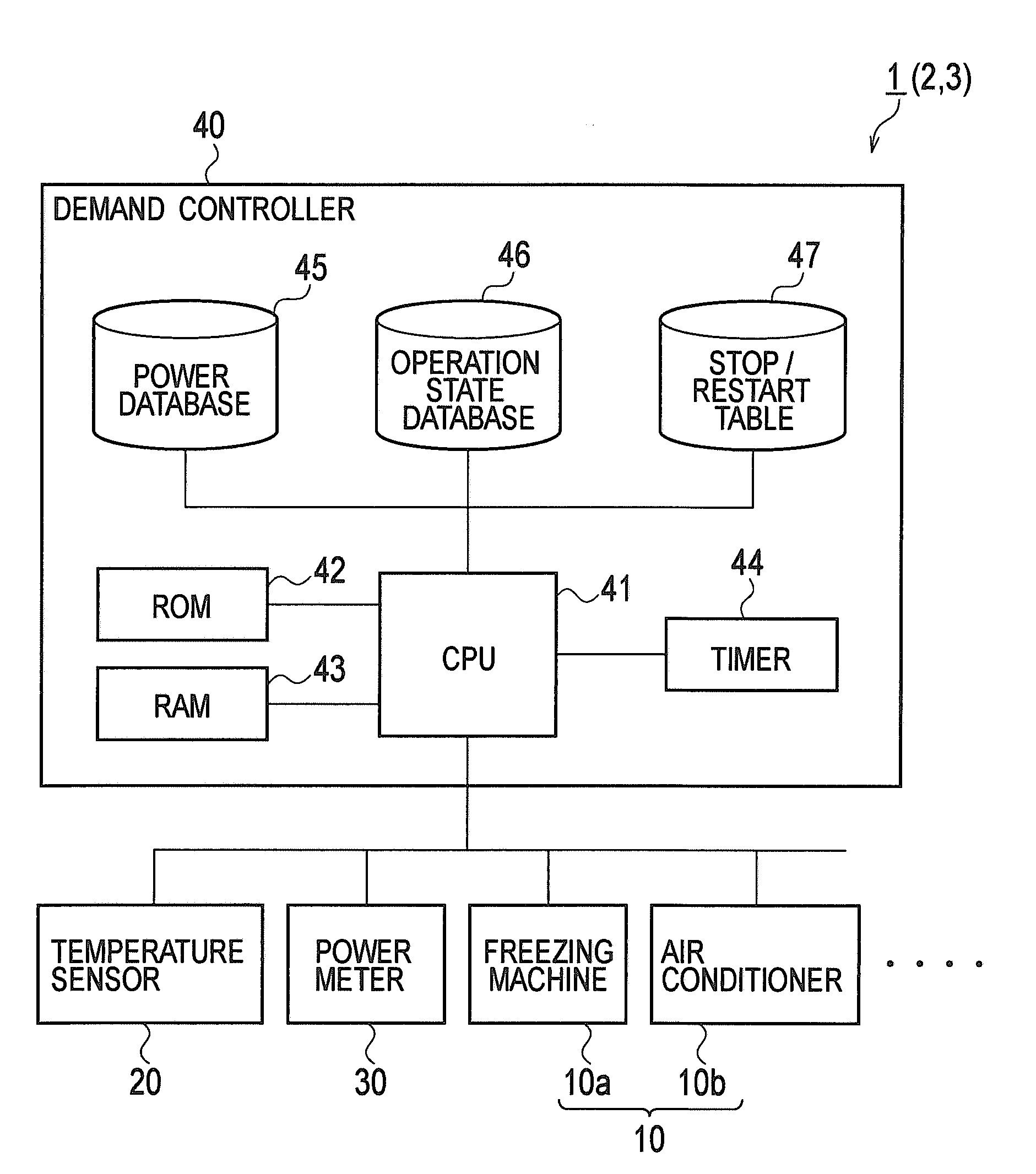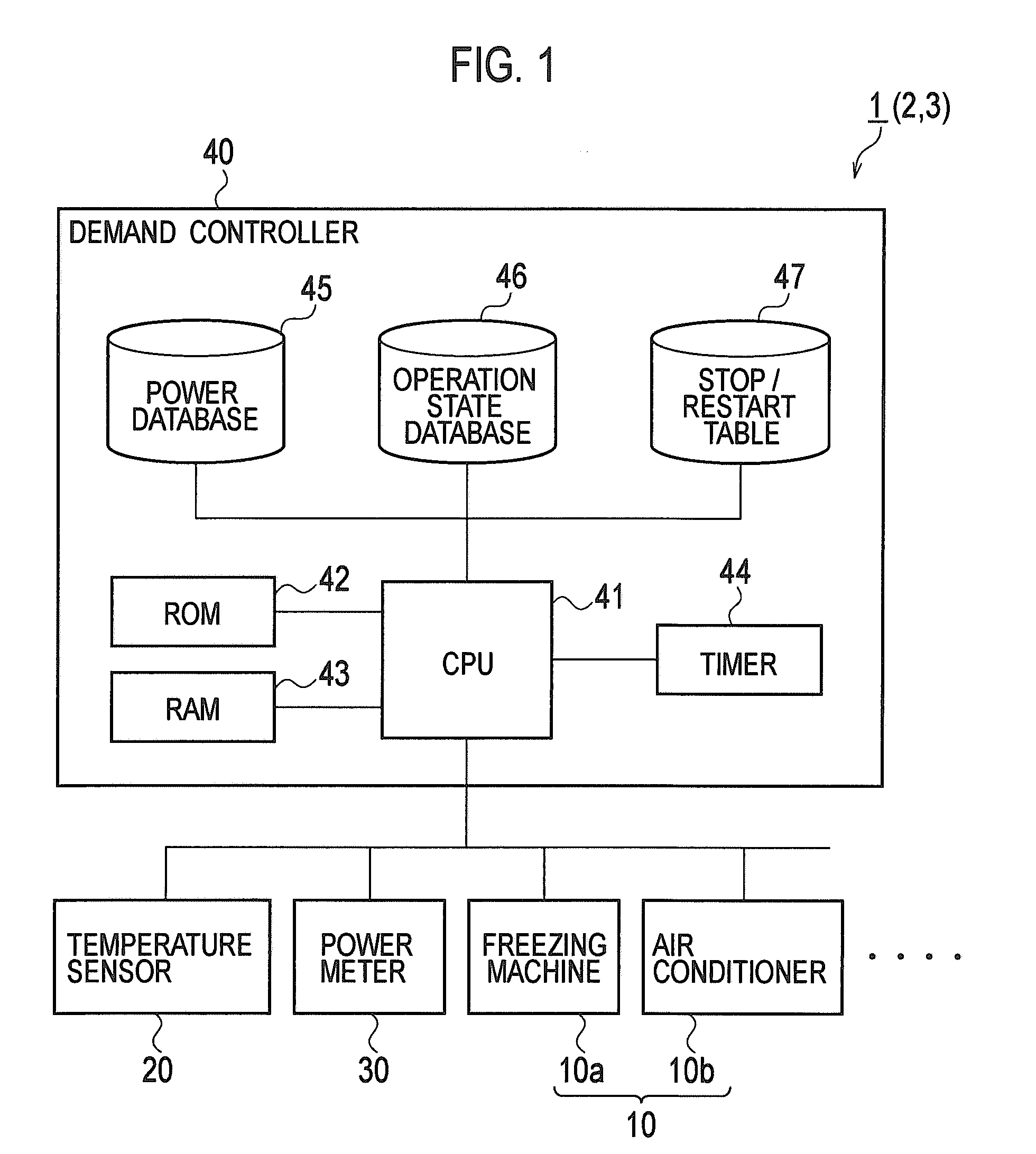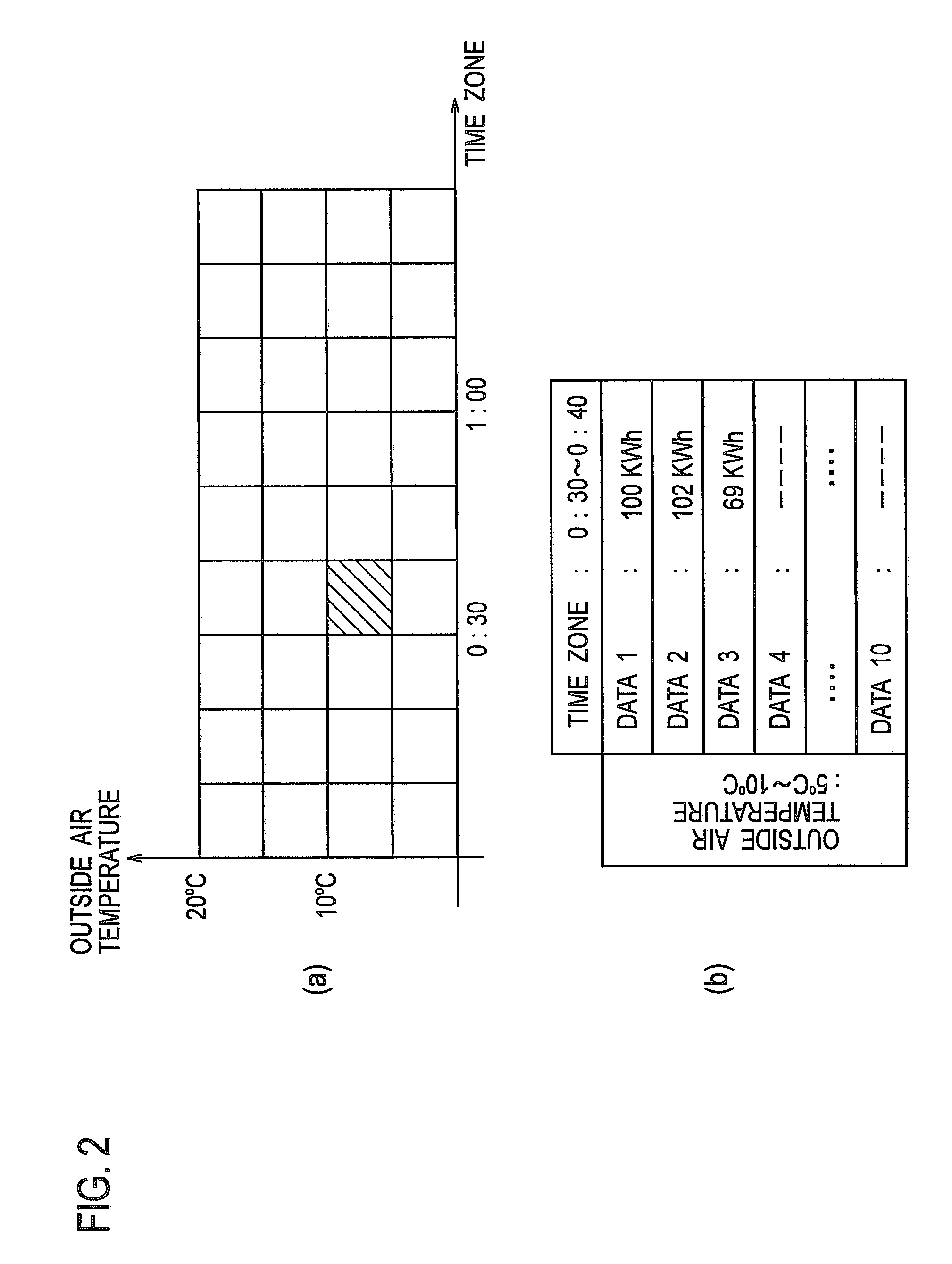Demand Control System, Demand Controller, Demand Program, and Demand Controlling Method
- Summary
- Abstract
- Description
- Claims
- Application Information
AI Technical Summary
Benefits of technology
Problems solved by technology
Method used
Image
Examples
first embodiment
[0053]Here, in this embodiment, the CPU 41 is configured to calculate the predicted integration value of the power predicted to be consumed in a current demand time period at the start of the current demand time period. For example, when the demand time period is sectioned by 30 minutes, the CPU 41 calculates the predicted integration value of the power predicted to be consumed from 0:30 to 1:00 at the time of 0:30. Similarly, the CPU 41 calculates the predicted integration value of the power predicted to be consumed from 1:00 to 1:30 at the time of 1:00, and calculates the predicted integration value of the power predicted to be consumed from 1:30 to 2:00 at the time of 1:30. Alternatively, the CPU 41 may be configured to calculate the predicted integration value of the power predicted to be consumed in the current demand time period before the start of the current demand time period. Now, in a first embodiment, an example is described in which the predicted integration value is ca...
second embodiment
[0086]FIG. 11 is a flowchart showing the demand controlling method and illustrates details of the prediction control processing (step S11) at the start of the demand time period shown in FIG. 6. Here, the processing from step S71 to step S85 shown in FIG. 11 is similar to the processing from step S21 to step S35 shown in FIG. 7, and description thereof will be omitted.
[0087]In step S77, when a determination is made that the predicted integration value X does not exceed the power target value Y (step S77: NO), the CPU 41 calculates the predicted integration value Xn+1 in the subsequent demand time period (step S86). The predicted integration value Xn+1 in the subsequent demand time period is calculated by the processing similar to step S72 to step S76.
[0088]Thereafter, the CPU 41 determines whether or not the predicted integration value Xn+1 in the subsequent demand time period exceeds the power target value Y (step S87). When a determination is made that the predicted integration v...
third embodiment
[0093]In a demand control system 3 the CPU 41 causes the RAM (a maximum power storage unit) 43 to store a maximum integration value among the consumption integration values of power actually consumed in respective demand time periods in a current month. Here, instead of the RAM 43, the CPU 41 may cause other storage media to store the value.
[0094]Moreover, the CPU 41 is configured to execute processing as shown in FIG. 12. FIG. 12 is a view showing processing contents of the demand control system 3 according to the third embodiment. FIG. 12(a) shows a case where the predicted integration value X in the current demand time period Y is equal to or below the power target value Y as well as being equal to or below a maximum integration value Smax. In this case, the CPU 41 changes the power target value Y in the current demand time period to the maximum integration value Smax (see FIG. 12(b)). Note that, in the demand contract method, the rate is set up based on the maximum integration ...
PUM
 Login to View More
Login to View More Abstract
Description
Claims
Application Information
 Login to View More
Login to View More - Generate Ideas
- Intellectual Property
- Life Sciences
- Materials
- Tech Scout
- Unparalleled Data Quality
- Higher Quality Content
- 60% Fewer Hallucinations
Browse by: Latest US Patents, China's latest patents, Technical Efficacy Thesaurus, Application Domain, Technology Topic, Popular Technical Reports.
© 2025 PatSnap. All rights reserved.Legal|Privacy policy|Modern Slavery Act Transparency Statement|Sitemap|About US| Contact US: help@patsnap.com



